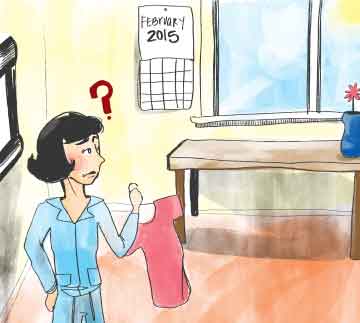Nature in control: Winter weather warmer
February 11, 2015
The uncontrollable shivers and constant battles with snow are not as common around EWU this winter as in prior because the Pacific Northwest is in the middle of a warming period called El Niño.
Robert Quinn, Ph.D., a meteorologist and professor of geography at EWU, said, “We are in an El Niño event, which is a condition where the Eastern Equatorial Pacific gets much warmer than normal. Some areas are almost immune to it, but other areas are heavily influenced by it, [and] we’re one of them.”
According to the website for the National Oceanic and Atmospheric Administration, “El Niño results from interaction between the surface layers of the ocean and the overlying atmosphere in [the] tropical Pacific.”
Because of this, fish populations may dwindle, which will affect the mammals who survive off them, according to the website of the California Department of Fish and Wildlife.
El Niño is a naturally occurring event that humans have little influence over. Quinn said it is an event that has occurred for centuries, so humans are not provoking it.
“There are other impacts on climate, [such as] global warming, and if you want to extend that to the natural sequences of El Niño, if the atmosphere and the ocean are getting warmer, El Niños are probably going to be more frequent and a little bit more long lasting,” said Quinn. “That’s about the only tentative link you could make.”
During an El Niño winter, “What happens is the storm track splits; part of it goes north into South Alaska, the other part goes south into California,” said Quinn.
El Niño can have different effects around the world, but in the Pacific Northwest, it results in a warmer winter that is typically more dry with low snowfall.
However, “There is a variation in terms of El Niño patterns,” said Quinn. “Instead of having a drought winter, we end up with near-normal precipitation because the southern branch of the storm track heads just far enough north to get us in it.”
“This winter, we’re bouncing around between the high-pressure ridge, the fog and low clouds [and] the drought pattern,” said Quinn.
As a result, the Pacific Northwest may avoid experiencing a drought from this winter.
Quinn said this El Niño is a weak one that he believes will not extend into next year. “Right now, I don’t see a major drought [coming] in the Pacific Northwest,” he said.
California, on the other hand, is still suffering from drought, and the time to try and reverse that is running out.
“California is in their fourth year of drought, and it’s getting awful late in their season,” said Quinn. “Hopefully in the next month and a half, they’ll get some relief, but there’s no way in that period of time that they’re going to suddenly fill up all [of] the reservoirs, since they’re sitting at 25 percent right now.”
He said California’s multibillion-dollar industry of irrigators are beginning to have water rationed for them to be filled. “The end result is that California is in a terrible situation,” said Quinn.









